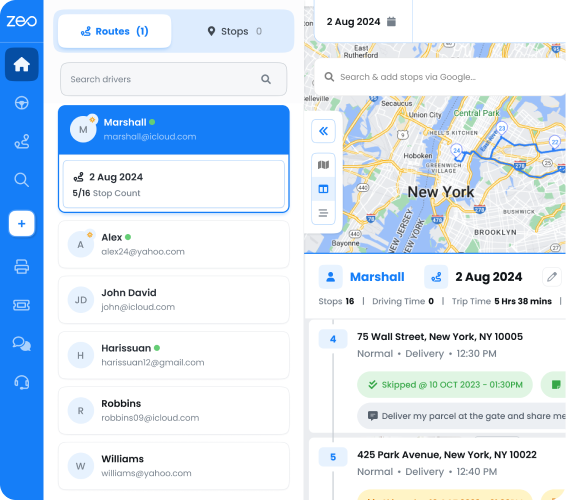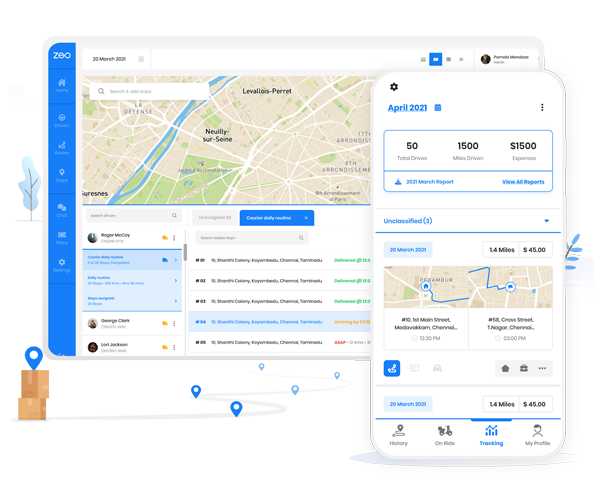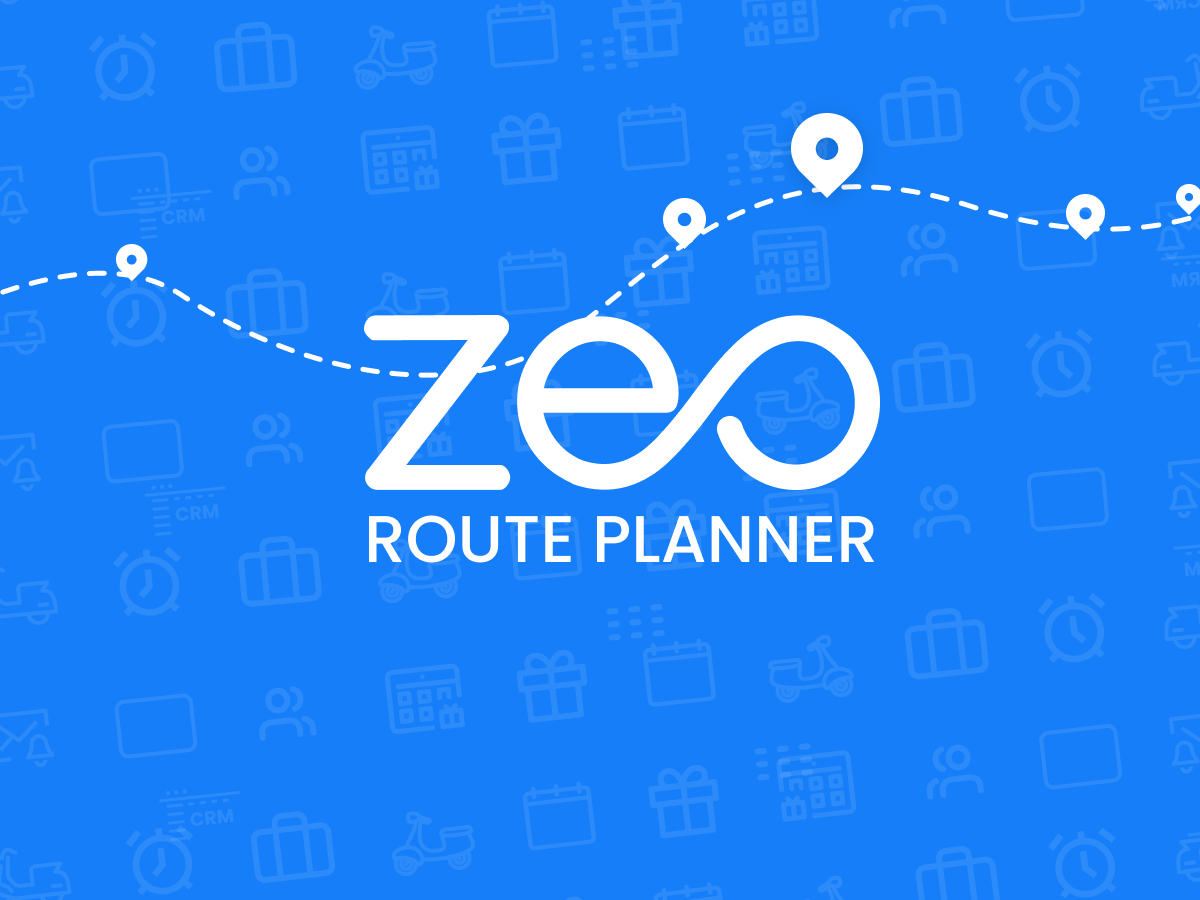Updated on: October 5, 2025
When you have multiple options to choose from, choosing the right thing becomes crucial. Today, there is a plethora of route planners available. If you fall for the hype and select a route planner that doesn’t fit your needs, you end up with regret.
Understanding the features, benefits, and limitations of these tools before making the purchasing decision will help you make the right choice.
One such tool is Bing Maps Route Planner.
What is Bing Maps Route Planner
Bing Maps Route Planner is a mapping and routing tool developed by Microsoft. It enables users to plan routes with multiple stops efficiently. Businesses and individuals utilize it to optimize travel paths and reduce operational inefficiencies.
The planner supports organizing daily schedules, minimizing unnecessary travel, and saving time. Unlike generic navigation tools, it focuses on planning multi-stop routes for productivity and convenience.
Use Cases of Bing Maps Route Planner:
- Delivery Businesses – Plan multi-stop delivery routes efficiently to save time and fuel.
- Field Service Teams – Schedule technician visits or service calls in the most efficient sequence.
- Sales Teams – Map multiple client visits per day to maximize customer interactions.
- Event Planning – Organize locations for meetings, promotional activities, or site visits efficiently.
- Personal Travel – Plan complex trips with multiple destinations while minimizing driving distance.
Key Features of Bing Maps Route Planner
Bing Maps Route Planner provides several features that help users plan routes efficiently and save time. These tools make multi-stop planning easier and improve productivity for both individuals and businesses.
- Multi-Stop Route Planning
Users can add multiple stops and rearrange them for the most efficient path. This feature helps plan daily trips or delivery schedules without extra apps. Optimizing the order of stops reduces unnecessary travel and improves time management. - Route Distance and Duration Calculation
The planner calculates total distance and estimated travel time for the entire route. Users can compare alternative routes and choose the most efficient one. This ensures better planning for both short trips and complex schedules. - Directions with Step-by-Step Guidance
Bing Maps provides clear step-by-step directions for all planned routes. Users can follow precise instructions to avoid confusion while traveling. This is especially helpful for routes with multiple stops and unfamiliar areas. - Export and Share Routes
Users can export routes to Excel or share them with team members. This feature allows better coordination and easy communication of schedules. Teams can work together efficiently without manually recreating routes. - Integration with Microsoft Ecosystem
Bing Maps integrates with Microsoft tools like Outlook and Teams. Users can sync routes with calendars and coordinate schedules efficiently. This ensures seamless workflow across business tools.
How Bing Maps Compares to Google Maps Route Planner
Bing Maps and Google Maps both provide route planning, but they serve slightly different needs. Bing Maps focuses on integration with Microsoft tools and multi-stop planning, while Google Maps emphasizes mobile features and global coverage.
For businesses, choosing between them depends on priorities like the number of stops, mobile usability, and ecosystem compatibility. Both platforms have strengths and weaknesses that can impact daily route planning and efficiency.
| Feature | Bing Maps Route Planner | Google Maps Route Planner |
| Maximum Stops per Route | 25 stops | 10 stops |
| Visual View | Bird’s-eye aerial | Standard satellite |
| Offline Access | Windows app only | Android & iOS apps |
| Global Coverage | 35 countries with 15-minute delays | 220+ countries live updates |
| Mobile Features | Basic mobile support | Street View and AR |
| Ecosystem Integration | Microsoft 365 | Google Workspace |
| Free API Transactions | 125K/month | Paid from the first request |
How to Use Bing Maps Route Planner
Bing Maps Route Planner simplifies both simple drives and complex multi-stop routes. It is accessible via a web browser or the mobile app, allowing flexibility for different needs.
Using Bing Maps effectively helps users plan, optimize, and share routes efficiently, making route planning faster and more accurate.

increase fuel savings
Save 2 Hours on Deliveries, Everyday!
Optimize routes with our algorithm, reducing travel time and costs efficiently.
Get Started for Free
Step-by-Step Guide Using a Web Browser
Follow these steps to use Bing Maps for route planning:
- Go to bing.com/maps in a web browser or open the Bing Maps app.
- Click the “Directions” button to start your route.
- Enter your starting point in the “From” field.
- Enter your destination in the “To” field.
- Add up to 25 stops if needed.
- Reorder stops manually or choose the fastest route.
- Choose route preferences like avoid tolls, ferries, or avoid highways.
- Review the complete route with total distance and estimated travel time.
- Share the route with others or print turn-by-turn directions for offline use.
Limitations of Bing Maps
Bing Maps provides reliable mapping and routing for basic navigation needs. It works well for plotting routes, checking distances, and visualizing stops. For individual or casual multi-stop planning, it is easy to use via web or mobile.
Businesses, however, need more than simple navigation to improve delivery efficiency and reliability. They require live route tracking, proof of delivery, automated updates, advanced route optimization, analytics, and driver management.
- Live route tracking lets managers monitor drivers in real time and prevent delays.
- Proof of delivery confirms completed deliveries, reducing disputes and building customer trust.
- Automated updates keep customers informed without manual effort.
- Advanced route optimization ensures the fastest, most efficient routes, saving time and fuel.
- Route analytics provides insights to improve planning and overall efficiency.
- Driver management helps assign tasks, track performance, and manage the workforce effectively.
Zeo Route Planner offers all these features in one platform, helping teams save time, increase productivity, and ensure dependable service.
| Feature | Bing Maps Route Planner | Zeo Route Planner |
| Live Route Planning | Supports real-time location tracking via APIs. | Provides real-time tracking with driver location updates. |
| Advanced Route Optimization | Limited optimization options for multi-stop routes. | Provides advanced route optimization to maximize efficiency. |
| Proof of Delivery | Not inherently available; requires third-party integration. | Offers built-in POD functionality. |
| Automated Delivery Updates | Requires third-party integration for automation. | Delivers automated delivery notifications. |
| Driver Management | Limited driver-specific features; focuses on route planning. | Comprehensive driver management tools. |
| Route Analytics | Provides basic route optimization data. | Offers detailed route performance analytics. |
Conclusion
Bing Maps is a reliable tool for basic route planning and navigation. It handles simple multi-stop routes efficiently and integrates well with Microsoft services. However, businesses aiming to scale need more than basic maps.
Advanced route optimization, live tracking, automated updates, proof of delivery, analytics, and driver management are essential for efficiency and growth.
Tools like Zeo Route Planner provide all these features, helping businesses optimize routes, monitor performance, and enhance customer satisfaction. For companies looking to grow and maximize delivery efficiency, Zeo is the smarter choice.

Are you a fleet owner?
Want to manage your drivers and deliveries easily?
Grow your business effortlessly with Zeo Routes Planner – optimize routes and manage multiple drivers with ease.

increase fuel savings
Hassle Free Deliveries & Pickups!
Optimize routes with our algorithm, reducing travel time and costs efficiently.
Get Started for Free




























